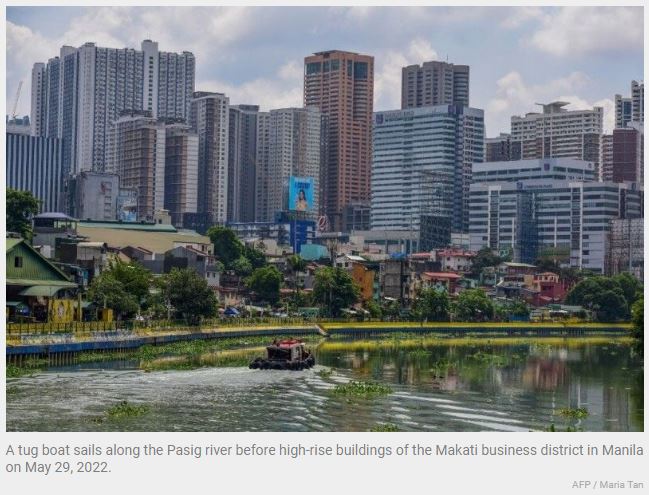‘Philippines more insulated from looming US recession’
MANILA, Philippines — The Philippines is more insulated from the looming recession in the US as domestic demand accounts for a larger portion of the economy, according to Maybank Kim Eng Research.
In a research note titled “Decoupling from US Recession,” Maybank said the Philippines and other countries in Southeast Asia are emerging as a defensive harbor and partially decoupling from the US economic downturn and potential recession.
Maybank economists Chua Hak Bin, Lee Ju Ye, Brian Lee Shun Rong and Luong Thu Huong prepared the report.
Maybank said correlation between Indonesia and US gross domestic product (GDP) growth between 1980 and 2021 stood at 0.01 percent followed by the Philippines at 0.10 percent.
“Indonesia and the Philippines have been more insulated from slowing external demand and US recession, with both economies continuing to expand even in 2008 and 2009 during the global financial crisis,” Maybank said.
According to Maybank, recessions in the Philippines during the 1980s and 1991 were largely due to internal political unrest and not because of an external slowdown.
Unlike the Philippines and Indonesia, Maybank said that GDP growth in Singapore, Malaysia, Thailand and Vietnam are historically more correlated with US GDP growth, as these economies are export-oriented.
Singapore had the highest correlation with the US economy at 0.38 percent, followed by Malaysia at 0.29 percent, Vietnam at 0.27 percent and Thailand at 0.25 percent.
“GDP growth in Singapore, Malaysia, Thailand and Vietnam are historically more correlated with US GDP growth, given that their economies are export-oriented,” Maybank said.
According to the bank, Singapore would be the most vulnerable and sensitive to a US recession and down cycle given the current episode.
Maybank said the probability of a US recession over the next 12 months has risen to 26 percent.
“The US recession is likely to be shallow rather than deep, cushioned by labor shortages in reopening sectors and healthier household and corporate balance sheets,” it added.
The bank said the US household debt is much lower at 67 percent of GDP versus the 85 percent just before the global financial crisis. US households have amassed an estimated $2.6 trillion of excess savings during the pandemic and have only drawn down $160 billion so far.
Furthermore, Maybank said US banks are well capitalized, owing to more stringent regulatory standards imposed in the wake of the global financial crisis.
Maybank enumerated reasons for partial ASEAN-US decoupling: reopening boost is still not over, strengthening intra-ASEAN trade to partly offset weaker China trade, rising foreign direct investments and shifting manufacturing supply chains to ASEAN, as well as elevated energy and food prices that benefit energy exporters and food exporters.
The bank also cited the less aggressive interest rate hiking cycle, except in the Philippines and Singapore, the relocation of headquarters and talent from Hong Kong, and capital inflows from Greater China because of US-China geopolitical rivalry and divergent COVID strategies.
The Philippines posted a 7.8 percent GDP growth in the first half of 2022 despite the disappointing 7.4 percent expansion in the second quarter.
After emerging from the pandemic-induced recession with a GDP growth of 5.7 percent in 2021 from a contraction of 9.6 percent in 2020, economic managers penned a target of 6.5 to 7.5 percent for this year and 6.5 to eight percent starting next year.
Source: https://www.philstar.com/business/2022/08/29/2205777/philippines-more-insulated-looming-us-recession


 English
English




